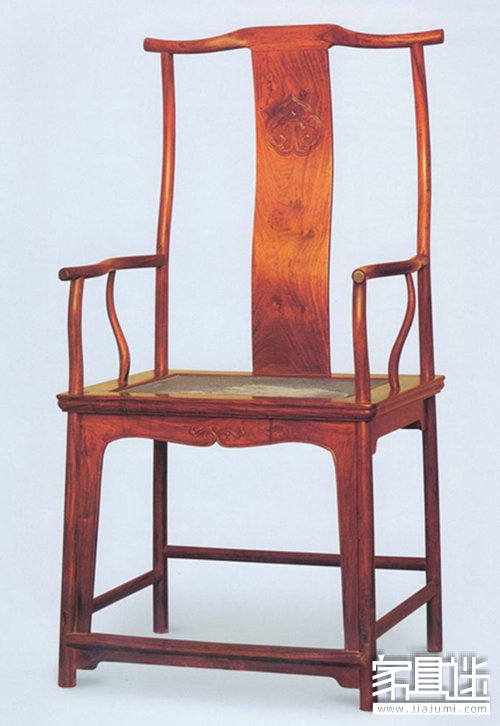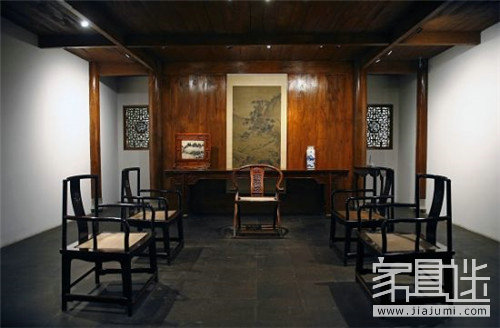The terms "Ming Dynasty Furniture" and "Ming-style Furniture" are often used interchangeably, but they actually represent distinct concepts. "Ming Dynasty Furniture" refers specifically to pieces crafted during the Ming Dynasty (1368–1644), encompassing a wide range of styles, including traditional lacquered furniture, hardwood pieces made from materials like huanghuali and rosewood, as well as some intricately designed cork furniture. On the other hand, "Ming-style Furniture" is more about an artistic style that emerged later, typically from the mid-Ming to early Qing periods. It is not merely a time-based classification, but rather a reflection of aesthetic values, craftsmanship, and cultural significance. This style emphasizes elegance, practicality, and harmony between form and function.

Elegant and Functional Furniture of the Ming Dynasty
Ming Dynasty furniture was heavily influenced by the styles of the Song and Yuan dynasties, but it evolved into a more refined and diverse form. Traditional lacquered furniture reached its peak during this period, with many exquisite examples showcasing advanced techniques and artistic expression. Hardwood furniture, especially made from huanghuali and rosewood, became popular in the mid-to-late Ming era. These pieces combined beauty with functionality, laying the foundation for what would be known as "Ming-style furniture." Softwood furniture, often made from eucalyptus or nanmu, also played a significant role, offering both affordability and intricate craftsmanship. Compared to earlier styles, Ming furniture had a more mature artistic expression, a broader range of designs, and even established a standard set of six basic furniture types: chairs, tables, cabinets, beds, pedestals, and screen seats. These combinations were commonly depicted in ancient Ming-era illustrations.
In the early years of the Qing Dynasty, particularly during the Kangxi reign, furniture continued to reflect the Ming style. However, by the Yongzheng and Qianlong periods, with the rise of the Baroque influence, furniture began to take on more ornate forms. Despite this shift, the traditional craftsmanship of the Ming period remained respected and widely practiced, especially among the common people who continued to produce simple yet elegant pieces using materials like eucalyptus and cedar.

The Influence of Literati on Ming-style Furniture
During the Ming Dynasty, the flourishing economy and culture led to remarkable advancements in craftsmanship. The middle of the Ming Dynasty to the early Qing Dynasty is considered the golden age of classical Chinese furniture, with the distinctive "Ming-style" emerging as a hallmark of this period. Ming-style furniture is typically made from high-quality hardwoods such as huanghuali and red sandalwood, featuring precise joinery, balanced proportions, and elegant design. Renowned scholar Yang Yao highlighted several key characteristics of Ming-style furniture: a generous shape, moderate proportions, minimalistic yet refined structure; scientifically sound construction, precision, and durability; natural material beauty; thoughtful leg design, which plays a crucial role in carving; and a strong literary atmosphere. Notably, Ming-style furniture was not limited to hardwood alone.
The development of Ming-style furniture was closely tied to the involvement of literati, who brought their artistic sensibilities and creative vision into the craft. Their influence helped elevate the aesthetic value of furniture, blending the refined taste of scholars with the skill of artisans. This fusion gave rise to a unique style that emphasized simplicity, grace, and cultural depth.
Geographically, the production center of Ming-style furniture was primarily in Jiangnan (southern China), especially around the Taihu Lake region. This area was known for its stable society, rich cultural heritage, and a concentration of scholars and skilled craftsmen. Gardens in this region were renowned for their quality and quantity, serving as retreats for literati who sought solace in nature and art. These gardens often featured furniture that complemented their architectural style, reinforcing the connection between landscape, architecture, and furniture design. Many scholars contributed to the theoretical foundation of Ming-style furniture, including Cao Zhao’s *Ge Gu Shi* and Wen Zhenheng’s *Long Objects*, further enriching its legacy.
ABLE See-through Gas Logs, made of light ceramic raw materials, light weight but strong not easy to break, hand-painted, natural colors and amazing details & realistic shapes, easy turn redness in the fire, can enhance the fireplace flame, all made of inorganic materials, odorless, fire-resistant temperature >900℃, product can be used for a long time, with reasonable price.
ABLE also have advanced molding technology for ceramic log called cast log, it is lighter, stronger, fuller details, and glowing area is larger in the fire.ABLE can supply many kind of log accessories for fireplace, such as pebbles, coals, charcoals, pine cones, maple leaves, aglow ember, top-grade rock wool, stained vermiculite, small coal chips, barks, balls and hollow ball, ceramic pitted pebble and rough Lava rock that won't burst in outdoor fire pit, Pumpkin lamp, Skull and bone for Halloween Decor fire, fireplace log grate etc.
ABLE factory is located in Yixing City, Jiangsu. It is a well-known production base for fire resistant insulation materials and environmental protection products. Yixing is also a city has developed commerce and convenient transportation. Our company sincerely hopes to cooperate with professional customers, and welcome to visit our factory!
See-Through Gas Logs,Double Sided Gas Logs,See Through Gas Log Set,See Through Fireplace Gas Logs
Yixing Able Ceramic Fibre Products Co., Ltd , https://www.ablegaslogs.com